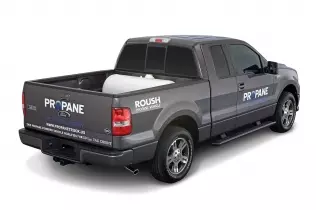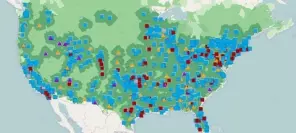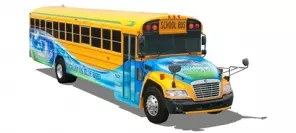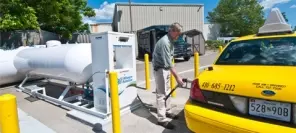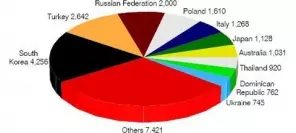- Main page
- Search
- Up to date
- Products
- Technology
- Vehicles
- Video
- Conversion Payback Simulator
Port Injection - Conversion Payback Simulator
Direct Injection - Conversion Payback Simulator
Diesel - Newsletter
Autogas in US on high tide
 loading results...
loading results...Autogas-powered vehicle sales are up largely thanks to the rising demand for school buses running on LPG. They have accounted for 12% of all type C school bus sales lately. Blue Bird Corp., one of the most known and renowned manufacturers of such vehicles, saw a considerable hike in deliveries in 2013 and other producers, including Thomas Built Buses, add similar models to their ranges to capitalise on the blooming interest.
The courier sector has also seen interest in autogas-powered vehicles going nowhere but up. UPS is just one, but a particularly good example here as the company has recently invested 70 million dollars in a fleet of no fewer than 1000 vans and trucks and a network of at least 40 refueling stations. The vehicles will be delivered by the Freightliner Chassis Corporation and will feature 6-litre GM-made engines. The new cars will be used alongside the bigger S2G trucks motivated by bigger (8-litre) units, also made by General Motors. Both motors are fitted with similar liquid state LPG injection systems produced by CleanFUEL USA.
The development of the American autogas market is so rapid in part thanks to the actions undertaken by the Propane Education & Research Council (PERC). The organisation cooperates with vehicle and engine manufacturers to help fleet managers meet their demands and expectations as far vehicle range is concerned. For example, PERC has promoted Roush CleanTech's Ford F- and E-series conversions, now used in considerable number across fleets of such companies as DHL, DISH Network, Sears or ThyssenKrupp Elevator.
New vehicles with factory or approved conversions are not all, though – aftermarket conversion kits have also been enjoying higher demand lately. These are both bi-fuel and LPG mono-fuel kits. This in turn means that a growing number of manufacturers of such kits – both American and foreign ones – receive EPA and CARB certificates. And even though certified autogas systems are crucial in terms of the sector's further development, the very certification process is long and costly. In California, where green cars enjoy particularly strong support, simplifying the procedures is being seriously considered.
The number of approved installers is obviously also on the up. Apart from that, research initiatives are undertaken in order to develop new dual-fuel LPG systems for Diesel engines used both in vehicles and stationary machines. Direct autogas injection motors are thoroughly tested, too.
Apparently there is no turning back from the LPG path in the US. This is due to good properties of the fuel, low cost of refueling infrastructure development and easy access to knowledge concerning vehicle conversions. The fact that autogas-powered vehicles can be maintained on the same garage stands as conventionally fueled cars is also a factor. As is the availability of training materials for installers, who can refer to industry organisations and autogas-related companies, such as PERC, Roush CleanTech or the National Alternative Fuels Training Center. If the trends continue as they are today, the US may become the largest autogas market in the world within a few years. And why not?


